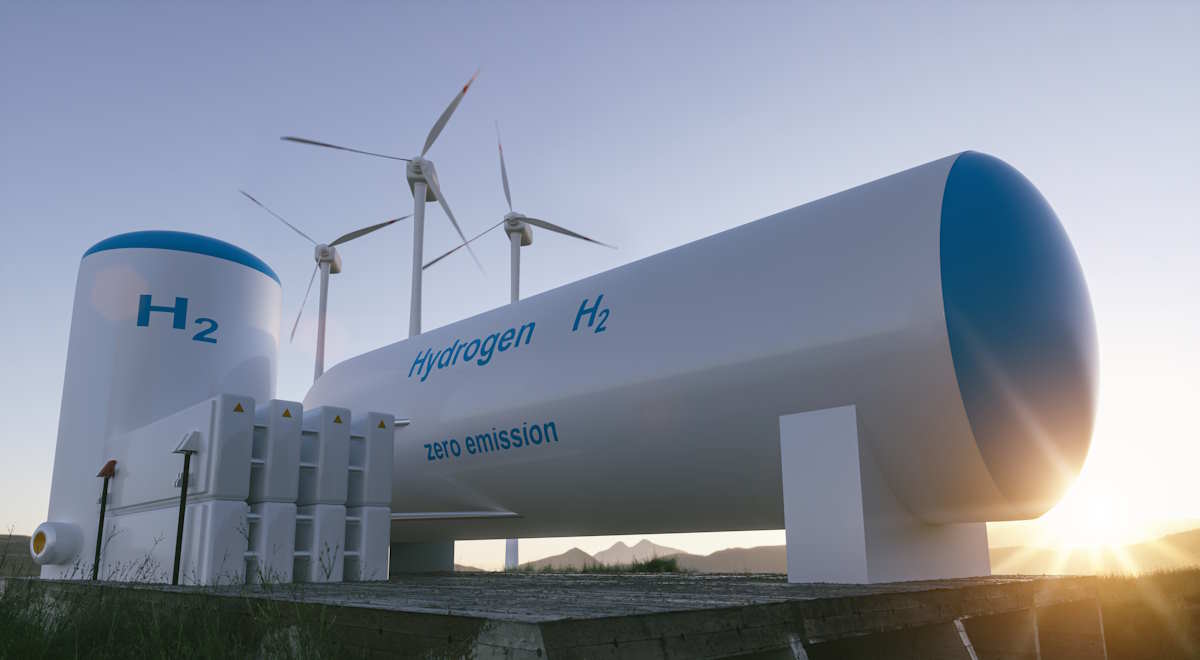Hydrogen as a clean fuel has gained acclaim in the industrial segment during the last few years. It can be produced using renewable energy sources and stored to serve the peak demands for power generation. Additionally, it can replace fossil fuels to drive decarbonization in various sectors such as shipping, aviation, power plants, and industries.

As of 2022, the worldwide hydrogen storage market touched a whopping $2.8 billion and is set to grow at an impressive 12.7% per annum from 2023 to 2032. While the numbers look great on paper, they do not resolve the practical challenges related to hydrogen storage. Consumers struggle to find safe and effective storage methods despite the advancements in the industry.
Fortunately, several innovations are emerging as saviors in this context. We will highlight a few tech tips for industrial businesses seeking appropriate hydrogen storage solutions.
Advancements in Material Science
Storage materials play a key role in promoting the widespread use of hydrogen in industrial applications. Research shows that these materials should address the requirements of abundance, safety, easy handling, low cost, and rapid kinetics. They should also have suitable thermodynamic properties and high gravimetric and volumetric densities.
Industries can explore cutting-edge materials such as metal hydrides, chemical hydrides, and carbon nanotubes as they offer all these properties. Porous materials such as covalent organic frameworks (COFs) and metal-organic frameworks (MOFs) also address the need for hydrogen storage. Ongoing research and development efforts in this field are making more options available for industrial applications.
Compression and Liquefaction
Compression and liquefaction technologies make it possible to store and transport hydrogen safely in a compact and dense form. High-pressure and cryogenic storage systems can reduce the volume and facilitate transportation and distribution.
Solid-state hydrogen storage is an even better option when it comes to compression technologies
According to H2MOF, solid-state storage is ideal for long-haul transport because it does not require high pressure or liquefaction. Conversely, liquid-state hydrogen evaporates over time, even when costly and advanced thermal isolation storage systems are used. Since solid-state technology can operate at significantly lower pressure, it is possible to design large storage tanks at a lower cost than high-pressure tanks.
Hydrogen Carrier Materials
Another tech tip industrial businesses can use for safe and effective hydrogen storage is the use of carrier materials as an alternative to conventional storage methods. These carrier materials chemically bind and release hydrogen molecules, enabling reversible storage without the need for high-pressure tanks or cryogenic temperatures.
The Department of Energy notes that the use of carriers as a hydrogen delivery method is still in the early stages of research. However, materials like metal hydrides, reversible hydrocarbons, and carbon or other nanostructures show great promise. They offer low toxicity, high energy density, and compatibility with existing infrastructure.
Hydrogen Storage Tanks and Infrastructure
When it comes to hydrogen storage innovation, tanks and infrastructure play a key role. According to data, the market size of hydrogen storage tanks and transportation is predicted to reach $5140.6 million by 2030, with a growth rate of 41.73% from 2023-2030. Despite the impressive numbers, storage infrastructure still has a long way to go.
Industrial businesses must invest in specialized tanks and infrastructure for hydrogen storage, distribution, and refueling. They should also develop robust and scalable solutions such as large-scale storage facilities, pipeline networks, and underground caverns. The best way to do it is by collaborating with engineering firms and infrastructure developers to design storage infrastructure that meets safety standards and regulatory requirements.

Safety and Risk Management
In a recent study, it was found that a system with a large hydrogen storage capacity or high pressure is associated with an unacceptable risk. It means businesses must prioritize safety and risk management when implementing storage systems in industrial settings. A thorough risk assessment can help them analyze potential hazards and create mitigation measures accordingly.
They can consider deploying advanced monitoring and control systems to track storage conditions, detect anomalies, and optimize performance. For example, sensors and telemetry systems can effectively monitor hydrogen levels, pressures, and temperature in real time. If anything appears amiss, prompt action can avert disaster.
Automated control algorithms can help maintain safe operating conditions and prevent leaks, overpressure, or other hazards. Further, implementing training programs, safety protocols, and emergency response plans can ensure safe handling, storage, and transport.
Conclusion
Industrial businesses can overcome hydrogen storage challenges with the help of innovative technologies. While some solutions are already available, many more are being developed, making the transition to a hydrogen-powered future a reality rather than just a dream.